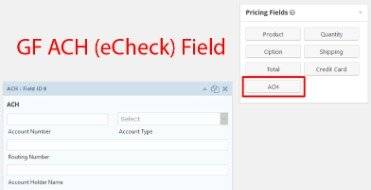
Also, any adjustments or manual journal entries that have been made since the last reconciliation need to be accurately documented in the system. QuickBooks will load the statements and facilitate a side-by-side comparison. If QuickBooks is not connected to online accounts, the statements will not be loaded. Prepare for the reconciliation by entering all transactions that occurred during the statement period you are about to reconcile.
- If this happens, you will need to approve the match.
- It will lessen the amount of manual reconciliation and unnecessary cross-checks.
- Should you encounter complex issues, don’t hesitate to seek guidance from QuickBooks resources or consult with accounting professionals.
- Banking services provided by our partner, Green Dot Bank.
- Bill payments are automatically synced, matched, and categorized in QuickBooks.
- Then, make the necessary changes to ensure the transaction details accurately reflect the actual transaction.
There’s even a mobile card reader so you can swipe or dip the card from your phone or tablet. Reconciling statements with your QuickBooks company file is an important part of account management. It ensures that QuickBooks entries align with those in your bank and credit card account statements. Account reconciliation in QuickBooks is a pivotal task for maintaining accurate and reliable financial records. This guide has walked you through the essential steps of the reconciliation process, from preparing your documents to troubleshooting common issues. The next step is to identify any discrepancies between these two sets of records, which could be due to errors, omitted entries, or timing differences in recognizing transactions.
How to reconcile accounts in QuickBooks Online
After you reconcile, you can select Display to view the Reconciliation report or Print to print it. The journal entry goes into a debits and credits explained special expense account called Reconciliation Discrepancies. If your beginning balance doesn’t match your statement, don’t worry.
To modify any information entered in the previous step, use the Modify option. When you finish reconciling accounts, QuickBooks automatically generates a reconciliation report. It summarizes the beginning and ending balances, and it lists which transactions were cleared and which were left uncleared when you reconciled. This report is useful if you have trouble reconciling the following month.
I’m always around whenever you have concerns about reconciling transactions. Currently, Alliant Credit Union doesn’t have a business account. Here’s an up-to-date list of alternatives for the Alliant Credit Union Business Account. It helps you know the true, up-to-date value of your business. It can also help with account audits and tax preparation by catching errors early.
Step 3: Compare your statement with QuickBooks
You need to review your accounts in QuickBooks to make sure they match your bank and credit card statements. If you would like to streamline your reconciliation process in QuickBooks, Synder is the answer. For accounts connected to online banking, confirm that all transactions are accurately matched and categorized.
Since all of your transaction info comes directly from your bank, reconciling should be a breeze. You can see transactions that have come directly from your bank feed, and transactions that you’ve manually added in QuickBooks. Once connected, all bills in QuickBooks Online will sync in real-time with Wise.

It needs to match the balance of your real-life bank account for the day you decided to start tracking transactions in QuickBooks. Give your customers the option to pay via credit card, debit card, PayPal, or bank transfer. QuickBooks processes the payment and transfers the money to your bank account.
Correcting previously reconciled transactions
This is useful for comparing the totals in your books to the totals on your bank statement. To complete the reconciliation, make sure the difference shown is zero. A reconciliation of a bank or credit card account compares the statement to what is in QuickBooks. This is the same idea as balancing an account and checkbook in more manual times. For reviewing past reconciliations, navigate to the Reports menu and select Reports Center.
Ask questions, get answers, and join our large community of QuickBooks users. Before you start, you may want to download any attachments tied to the reconciliation. Undoing a reconciliation deletes all existing attachments.
Step 1: Review your opening balance
If you use a different version, you can undo a reconciled statement by manually unreconciling each transaction. Adjusting entries may be necessary to correct these discrepancies, particularly in cases of bank errors or charges and fees not recorded in QuickBooks. Also, consider timing differences, such as checks that have been issued but not yet cashed, or bank fees that have yet to be recorded in QuickBooks.
I suppose the other option is to unreconcile and reconcile again, but we are looking at months. In cases involving significant or complex issues, it is recommended to seek the assistance of an accounting professional. If you want to reconcile in QuickBooks Desktop, this guide provides a detailed, step-by-step approach to help you through this process.
By accessing and using this page you
Reconciliation in accounting is a critical process, serving as a check-and-balance for financial accuracy. It involves comparing two sets of records to ensure they are in agreement and accurate. In the context of QuickBooks, reconciliation typically refers to matching the transactions recorded in the software with external financial statements, such as bank and credit card statements. This process is vital in verifying that the records in QuickBooks accurately reflect a business’s financial transactions.
برچسب ها: